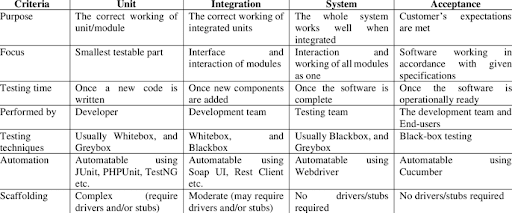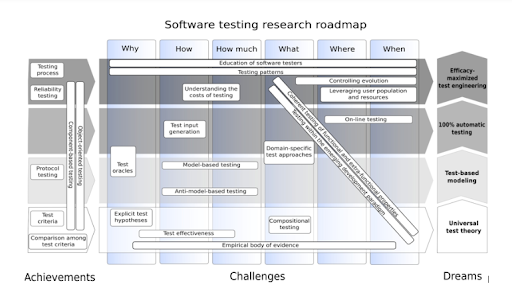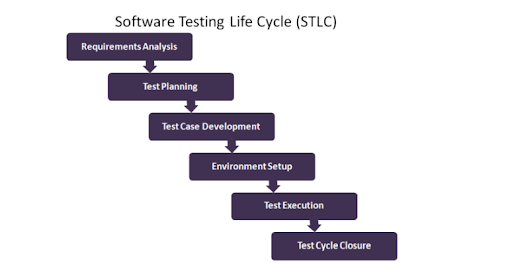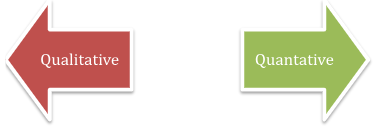- Exploring Software Testing Methodologies
- Chapter 2: Literature Review
- 2.1 Introduction
- 2.2 Empirical study
- 2.3 Theories and models
- 2.4 Literature gap
- Chapter 3: Methodology
- 3.1 Introduction
- 3.2 Method outline
- 3.3 Research philosophy
- 3.4 Research approach
- 3.5 Research design
- 3.6 Research Strategy
- 3.8 Research methods
- 3.9 Research ethics
- 3.10 Research limitations
Exploring Software Testing Methodologies
Chapter 2: Literature Review
2.1 Introduction
In the chapter on the literature significance of various issues and crucial aspects of the research are provided. With the proper exploration of the literature, various relevant topics of software testing types are discussed further. Similar research has been viewed for the establishment of this study. Software testing types are analyzed for the testing of compatibility, maintainability, portability, capability, integrity, reliability, usability, security, etc. of the software. This research presents a detailed analysis of the found terminologies, which are associated with software testing. There is a comparative study of software testing in the earlier days with present scenarios. The reports from various resources are analyzed to get accurate information for this study. Literature gaps are identified and further descriptions of these portions are presented. The objectives of various kinds of software testing have been defined and described. This paper will focus on the description of the different software testing techniques and approaches with which the different software is tested for quality assurance. The findings of white box and black box testing are presented as well. Different review papers are studied to find out information about different software testing types. It also focuses on how software testing helps in business growth in the UK. With the help of literature, different perspectives on various testing types are presented.
2.2 Empirical study
According to Alferidah and Ahmed 2020, Software testing is a portion of software engineering, which checks the results of the developed software are accurate with the requirements. There are two basic types of software testing, (i) manual testing and (ii) automated testing. Manual testing is developed by the testers whereas automated testing is done with the software and it runs automatically (Alferidah and Ahmed 2020). Automated testing reduces the cost by the reduction of errors on the user end. Automated testing consists of two important steps for software testing and analysis, at first, the whole software goes under test (SUT) (Alshahwan et al. 2019), and then the user-desired function and modules are tested. Some well-known automated testing tools used for loading are “Apache JMeter”, “LoadRunner”, “Microsoft Visual Studio (TFS)” etc. “FIT (Framework for Integrated Test)” is used as the acceptance testing tool. Among the functional tools “Selenium”, “FitNesse” etc. are popular. Next comes the Graphical user interface tools or GUI tools with end-to-end testing tools like “Robbotium” and others (Alyahya, 2020). Various open-source testing tools in the market are used for automated software testing. Most organization prefers automated testing tools as it is less costly and saves time and reports say it provides the best customer satisfaction (Gerten et al. 2020). SAHI and Selenium are the most popular tools used for testing.
According to Hamza and Hammad, 2020, to control the quality of the source code, software testing is one of the most relevant methods. Manual software testing is classified into 3 categories white box testing, black box testing, and grey box testing. The developers need to choose the proper testing approach and methodology based on their requirements and scenarios. In white box testing every line of the code is inspected by the developer before it reaches the testing teams (Drave et al. 2019). In the execution of the white box testing, the complete testing is done by the developer for the particular system before sending it to the testing teams (Graham et al. 2021). Black box testing presents the whole analysis of the software done by test engineers or quality assurance testers (Hamza and Hammad, 2020). The tester here finds out the bugs, defects, or vulnerabilities in the software and then the specific requirements are checked and sent back to the developers to fix the defects found. Black box testing is implemented to verify if the customer's needs are fulfilled or not. In black box testing, there are two types of categorization, functional and non-functional. Functional testing is further categorized into unit testing, system testing, and integration testing. In Non-functional testing mostly the performance, usability, and compatibility are tested (Garousi et al. 2020). Lastly, it comes to grey box testing which consists of both white box testing and black box testing. This testing type is performed by people who are experienced in both testing and developing the software.

Figure 1: Software Testing Levels
According to Talley and Pathak, 2020, to classify the quality, correctness, and completeness of freshly or pre-developed software, software testing methods are needed. Software testing intends to find the errors in the software and try to correct them before handing it over to the customers. It also finds out the efficiency and precision of the performance of the software. To meet the desired results, testing of the software is done. For performing quality assurance tests the life cycle of the software testing is important. In the life cycle of software development, testing comes after the coding phase. Fundamental life cycles that are essential for the development of software are the “Software development Life cycle (SDLC)”, “Software Testing Life cycle (STLC)” and “Bug life cycle” (Jena et al. 2020) . In the Software development life cycle, we get the total development phases with the analysis of requirements, feasible studies, design, coding, testing, deployment, and maintenance. In the testing life cycle, complete testing is done based on the requirement analysis, test planning, development of test case, testing the environmental setups, then the execution of the tests and ends with the closure of the test cycles. Lastly, the bug life cycle comes. The bug life cycle begins with the testing of software and when the tester gets any new issues and until it is resolved, the bug life cycle continues. The two types of software testing are static testing which is manual and dynamic testing which is automated testing. There are five stages of manual testing. In the first stage of manual testing, the requirements are understood to find out the bugs and the defects of the testing. In the second stage as the requirements are understood, the test cases are written after that (Kumaresen et al. 2020). Test cases consist of the test sequences, test functions, and the different situations that will be written in the software application and software products. After writing the test cases, the tests are conducted in the next stage. In the fourth stage, the bug report logging is done (Masuda et al. 2020). A bug report consists of the title, steps regarding overcoming the bugs, and accuracy of the actual results with the desired ones and if there are any important attachments, which will be helpful for the development teams for better understanding of rectifying the bugs. Moreover, in the last stage, the detailed report is created by the tester after the execution of all the tests (Pecorelli et al. 2022). These steps are followed for the maximum no of manual testing processes. Automated testing has nine steps, at first, the experts on the automation tools are found by the testers. Then the right tools are chosen for the testing processes. Then among the different analyzed tools, the best-fitted tool is used for the automation. In the next step, other teammates are trained and the framework is created for the automation processes. The execution is planned after. The scripts are written with the reporting of the bugs and the script maintenance. There are four testing types explained (Taley and Pathak, 2020). Unit testing is very simple and done by the use of the units of software. Units are the minimal testable part of any software. The development teams use unit testing. The developer needs a complete understanding of coding and designing for conducting this test. However, the team of quality assurance can also perform these tests, as it is less time-consuming and more effective (Nayyar, 2019). The whole system does not involve unit testing (Debnath et al. 2020). To fix different issues parallelly this test is performed. It is a white box testing type. When two or more than two units are integrated, a group or structure forms. Integration testing helps to test these groups. After the addition of new elements, the tester needs to test it every time. Then comes system testing which is the testing of the entire system after built. System testing comes under black box testing. The entire architecture of the system is validated by system testing. Acceptance testing is the final testing stage; it is done before the system is delivered to its end user (Zardari et al. 2022). It helps to find out if the developed product meets the required criteria of the clients. It is final testing done for quality assurance. In this stage, bugs should not appear.
According to Basit et al. 2019, the reputation of software companies is built based on software development and its user end experiences. The entire system execution is needed at first in the testing phase. There is a software testing life cycle (STLC) followed by the developers for the testing methods (Basit et al. 2019). It starts with the requirement analysis for the testing of proper well-built software required for the testing phases. Next, the planning for the testing is done by the developers or testers. Then comes the test case development where the data for the test, conditions, and the result expectations are specified. Here the tester decides if the software meets the customer's requirements or if it needs any further development (O'Regan, 2019). The environmental setup is the required environment for the software and the hardware by which the execution of the test will be done. Here the configuration of the hardware, settings of the OS, test terminals, software configuration, and other factors are checked for performing the test (Anwar and Kar, 2019). After checking, what tests are needed to perform the tester then proceeds to execution of such tests. Then developed functions and codes are checked to see if it provide the expected results. Slight errors in the software can be a cause for the change of the entire application. To avoid this type of scenario, it is important to fix the errors as early as possible (Beyer. 2021). The tested modules are verified in the application structure. When the software is running with the help of the modules proper testing is done. The session of coding stages improves with functional testing techniques. To clear the errors from the program, the concentration of test designer needs in the codes. The software quality in the final stage will be different from the tested units (Okezie et al. 2019). Module failure can be a risk that will lead to lower the quality of the software. In the initial phases of software testing, structural tests are conducted to make error-free software. In software engineering, software testing remains a fundamental activity and will continue (Florea and Stray, 2019). Products should be tested in similar environments in which they will perform will give better accuracy and efficiency in the system.
2.3 Theories and models
Different models and theories relevant to the study are utilized for the development and evolution of the factors with relevant ideas and concepts. Various theories are identified for the discussion of the types of software testing. The software testing research roadmap provides detailed directions for the destination through achievements and challenges to attain specific dreams at the end (Samad et al. 2021). At first, the achievements or dreams are identified which helps to reach the asymptotic goals. The four dreams are Efficiency-maximized test engineering, 100% automatic testing, test-based modeling, and universal test theory (Corradini et al. 2020). The challenges section covers the questions related to the testing processes.

Figure 1.1: Software testing roadmap
There are four horizontal stripes given in the figure below, which show the routes approaching the goals. They are “[1] Universal Test theory, [2] Test-based modeling, [3]100% automatic testing, [4] Efficiency maximized test engineering.” There are various conditions, which help in software testing. At various times the rate of failure of the software avoids execution. Various testing types are used for various software. The allocated resources for the software testing are done based on six conditions. First, the tested items are verified and validated then the other features of the software are tested. (Ahmad et al. 2019) Various test approaches are checked in the software. The pass and fail criteria are checked with quality processing (Sablayrolles et al. 2019). There are different types of software testing models arising from software engineering used for the testing of various developed software.

Figure 2: Software testing life cycle
They are [1] Waterfall model, [2] V model, [3] Agile model, [4] spiral model and [5] iterative model. The waterfall model is easily implemented and maintained basic model. In the initial stage, the requirements are scrutinized. The required resources will be minimal and after every completed stage, the testing is conducted. The demerit here is no requirements will be updated or altered. V model is an advanced version of the waterfall model. Here the execution of tests and developments are done simultaneously in upward and downward ways. From the unit level, the testing will start and spread throughout the whole system (Spillner and Linz, 2021). Next is the agile model, which is a type of incremental and iterative model. It focuses on the satisfaction of the customer with the adaptation of the processes (Elgrably and Oliveira, 2020). In this model, fast and repeated developments are delivered. There is constant interaction between the testers, developers, and customers makes this model more flexible. The spiral model has a similar resemblance to the agile model but it focuses more on the analysis of the risk factors. Different stages in the spiral model involve planning. Analysis of risks, engineering,g and improvement or evaluation. It is most important for large and complex systems. The production of software is earlier in this cycle. Last comes the iterative model, where there is no more emphasis on the requirement lists at the time of starting the projects (Popereshnyak and Vecherkovskaya, 2019). The functional part requirements are first collected for the process of development. The risks of the tasks are reduced as the tasks that have high risks are completed at first. The requirements in the iterative model will be more than the waterfall model.
2.4 Literature gap
Software testing is a dynamic topic with technological advancement the testing techniques and types of software testing will change frequently. Most of the literature collected is based on the types of testing that are found in present times. There are about 100 testing types and various literature does not cover every testing type. Testing like Smoke, sanity, user acceptance security, and globalization tests are some testing types used at specific times. Due to a lack of information, old journals, and fake or invalid resources, various literature gaps are identified. There are limitations in the case studies, which made it hard to understand the software testing strategies, types, and techniques. A critical analysis of the performance of the tested software is rarely found. In the UK because of rising software industries, software testing became a crucial aspect of the development of such industries. The expectations and experiences of the customer regarding the software testing types have not been understood properly. The lack of internal communication in the literature review makes it unable to understand the importance of the classification of the software testing. This paper does not use the famously used newly introduced testing types for prediction, which got early success, thus it is important for future study on this topic. There is a lack of materials on the web for the particular topic. To address these gaps this research needs further study with the qualitative and quantitative methods to provide the best result possible. The conducted research was done based on secondary sources from different types of journals and data structures. This concludes that the previous gaps in literature will be present. The major limitations are based on the various perceptions and ideas from different types of journals.
Conclusion
Vital and crucial aspects of software testing have been explained successfully in this paper. With the revision and evaluation of relevant literature, the procedures are identified. The proper utilization of models and theories can be seen in the literature. Literature barriers are recognized based on interdependent concepts. This chapter presents the concept of different types of software testing relevant to the literature. Manual and automated testing are described properly for the readers' understanding. Software testing is a vast and dynamic topic that is evaluating day by day. Various types of testing help the software meet the client's requirements for software development. Various new techniques and approaches will be developed with time. Different software testing types are described according to the literature findings. The Software testing life cycle is also described potentially with the understanding from the literature. The models and theories also explain the software testing types and processes broadly. Literature gaps help to understand the future scopes or areas for the conducted research. In conclusion, it can be said that due to the vastness and dynamic of this topic, various testing types and strategies are covered in depth but many types are not described with the proper understanding of the lack of information.
Chapter 3: Methodology
3.1 Introduction
The methodology section describes the whole procedure of the conducted research. This research was conducted based on a secondary analysis as we can analyze the existing research and literature to bring out the best results with less time and cost. This chapter presents the research designs, methods, and limitations. This paper is contributed from pre-existing literature. This chapter presents the research design, which involves the strategic implementation of the procedures. The significant objectives are monitored in the research. The software testing issues are found and described accordingly. The method outline has been presented for strategic implementation processes. Different legal factors are checked at the time of data collection.
3.2 Method outline
Systematic procedures have been followed primarily in the research to acquire the required results based on the defined objectives. Identification of different important theories and strategies is done to describe the matter in depth. Logical data models of software testing have been identified according to various literature concepts and the qualitative approaches helped to understand the specific parts of software testing and find the important relevant topics on the types of testing. The functional and nonfunctional testing methods are described based on the unit testing system testing and other relevant topics. Research questions have been solved according to the literature. The literature gaps are presented as well in this paper.
3.3 Research philosophy
Various philosophies normally help the researcher in the identification of the issues and the purpose of this study. The research has been conducted depending on consistent outcomes. In the entire research, positivism, and interpretivism are followed properly. Different progress aspects have been considered. Software testing types are analyzed on the positive factors. The importance and relevance of the topic are understood. However, individual perspectives of the research have been considered in the literature review still it has been tried to make an unbiased study. The model of the research is made based on secondary analysis. The models, strategies, and approaches are also used significantly for this study. Depth knowledge of the small and large samples helps to understand the topic better. Interpretation of different authors has been significantly used in the research paper.
3.4 Research approach
The most significant approach that has been followed in this research is deductive. The analysis of the known theories is done in depth. As software testing is a broad field to study lots of resources are already available in the online portals. With this short span of time, the research has been conducted with the available materials from previous studies. This approach helped in the avoidance of risk in the information of the research. This section describes the procedure in which the stages to perform the entire research have been defined.

Figure 3: Research approach
3.5 Research design
The entire paper was designed with the qualitative method in the deductive approach. This paper was conducted through secondary data analysis. The data has been collected systematically from the prewritten authors. Market research on software testing types is done to check the demand for software testing. Sufficient data collection was done from online and offline resources. Theories on the software testing types have been checked for usage, working procedure, advantages, and disadvantages. As the topic is dynamic, new journals were considered for the execution of the research. This research is designed to explain the question that arises with the research and tries to meet the aims and objectives of the research. Due to global digitalization, most things are software-based nowadays, giving a huge hype for software development and testing. In the UK various software companies also use popular tools for software testing like ZAPTEST, Testsigma, Qase, Panaya, devZing, etc (Sutiah and Supriyono, 2020). The collection of data was done by qualitative approach. Thus previous findings are analyzed thoroughly.
3.6 Research Strategy
Relevant techniques that have been used by the researcher explain the research strategy. With the use of various case studies, grounded theories, and predetermined software testing types, this research has been conducted. Certain theories on the software testing types have been read based on the facts and problems. Various observations of the previous author's data and information gave a detailed understanding of this paper. The strategic management of the different secondary sources helps in the data analysis methods. The barrier to the qualitative analysis of data was managed properly. The established philosophy was maintained in the entire document. The secondary data analysis method was followed throughout the entire study.
3.8 Research methods
Three distinctive types of research techniques or methods are present. They are mono-method, multi-method, and mixed-method. This research is done based on the qualitative method. Thus multiple research processes have been used here. The data has been collected from different secondary sources available. The articles, reports, website materials, journals, and other resources are used here. As there is an involvement of multi-research methods, multiple types of data are collected in a wide range from relevant sources. The data analysis was done based on the relevant topics required to meet the research objectives and the answers to the research questions. The research work of famous research papers is accumulated for the research paper. At the time of setting the objectives, it has been analyzed if the objectives are SMART. The specificness, measurability, achievability, realism, and time-constrained objectives are checked.
3.9 Research ethics
Ethical issues will be taken into note while doing the study. Data confidentiality and privacy will be respected in the research process. Valid information will be disclosed that will not harm any type of organization, project or research work. This study will avoid making any false acquisitions. It will be focused on that data collection does not include defamation of any business or person. It will refrain from hurting any communities. The researcher’s honesty was ensured and biased opinions were avoided. Careless mistakes will be checked thoroughly. Usage of plagiarized content will not be seen. Required information will be disclosed so there will be no privacy issues. This study aims to help society to understand the topic deeply without making any critical issues.
3.10 Research limitations
There is an insufficient integration and comparison of the existing studies found. This study will not provide all the framework on the literature on the researchers of software testing. The entire research was done based on a qualitative approach the statistical data was not taken into account, which raised a further need for research on this topic. The software nowadays is tested mostly on manual topics but in the near future, automated testing will be more significant. There can be the possibility of many software-testing techniques discoveries in the future that make the expansion of this topic which will be studied in future research.
Conclusion
The methodology of the research paper was discussed in this chapter. The identification of various strategies to conduct the research has been introduced in this section. The terms of the research philosophies are described as well. This paper followed the positivism and interpretivism philosophies in the research. The deductive approach has been followed in the whole analysis of this study. The analysis of relevant theories, case studies, reports, and other sources made the paper more specific. Qualitative approaches made the data flexible and reduced the cost, specific information was obtained, and the research was open-ended. Detailed data collection helps to attain genuine insights into the research. Though the statistical part was not analyzed properly in this research most of the portion of the software testing types are covered.
ReferenceLists
Journals
Ahmad, J., ul Hassan, A., Naqvi, T. and Mubeen, T., 2019. A Review on Software Testing and Its Methodology. i-Manager's Journal on Software Engineering, 13(3), p.32.
Alferidah, S.K. and Ahmed, S., 2020, September. Automated software testing tools. In 2020 International Conference on Computing and Information Technology (ICCIT-1441) (pp. 1-4). IEEE.
Alshahwan, N., Ciancone, A., Harman, M., Jia, Y., Mao, K., Marginean, A., Mols, A., Peleg, H., Sarro, F. and Zorin, I., 2019, July. Some challenges for software testing research (invited talk paper). In Proceedings of the 28th ACM SIGSOFT International Symposium on Software Testing and Analysis (pp. 1-3).
Alyahya, S., 2020. Crowdsourced software testing: A systematic literature review. Information and Software Technology, 127, p.106363.
Anwar, N. and Kar, S., 2019. Review Paper on Various Software Testing Techniques. Global Journal of Computer Science and Technology, 19(C2), pp.43-49.
Basit, A., Khan, I.A., Zubair, A. and Ameen, K., 2019. Software development life cycle and testing.
Beyer, D., 2021. Status report on software testing: Test-Comp 2021. In Fundamental Approaches to Software Engineering: 24th International Conference, FASE 2021, Held as Part of the European Joint Conferences on Theory and Practice of Software, ETAPS 2021, Luxembourg City, Luxembourg, March 27–April 1, 2021, Proceedings 24 (pp. 341-357). Springer International Publishing.
Corradini, D., Zampieri, A., Pasqua, M., Viglianisi, E., Dallago, M. and Ceccato, M., 2022. Automated black‐box testing of nominal and error scenarios in RESTful APIs. Software Testing, Verification and Reliability, 32(5), p.e1808.
Debnath, N., Salgado, C., Peralta, M., Riesco, D., Roqué, L., Montejano, G. and Mazzi, M., 2020. A Software Testing Strategy Based on a Software Product Quality Model. In Innovation in Information Systems and Technologies to Support Learning Research: Proceedings of EMENA-ISTL 2019 3 (pp. 248-259). Springer International Publishing.
Drave, I., Hillemacher, S., Greifenberg, T., Kriebel, S., Kusmenko, E., Markthaler, M., Orth, P., Salman, K.S., Richenhagen, J., Rumpe, B. and Schulze, C., 2019. SMArDT modeling for automotive software testing. Software: Practice and Experience, 49(2), pp.301-328.
Elgrably, I.S. and Oliveira, S.R.B., 2020, October. Model for teaching and training software testing in an agile context. In 2020 IEEE Frontiers in Education Conference (FIE) (pp. 1-9). IEEE.
Florea, R. and Stray, V., 2019. The skills that employers look for in software testers. Software Quality Journal, 27, pp.1449-1479.
Garousi, V., Rainer, A., Lauvås Jr, P. and Arcuri, A., 2020. Software-testing education: A systematic literature mapping. Journal of Systems and Software, 165, p.110570.
Gerten, M.C., Lathrop, J.I., Cohen, M.B. and Klinge, T.H., 2020, December. ChemTest: An automated software testing framework for an emerging paradigm. In Proceedings of the 35th IEEE/ACM International Conference on Automated Software Engineering (pp. 548-560).
Graham, D., Black, R. and Van Veenendaal, E., 2021. Foundations of software testing ISTQB Certification. Cengage Learning.
Hamza, Z.A. and Hammad, M., 2020. Testing Approaches for Web and Mobile Applications: An Overview. International Journal of Computing and Digital Systems, 9(4), pp.657-665.
Jena, A.K., Das, H. and Mohapatra, D.P. eds., 2020. Automated software testing: foundations, applications and challenges (pp. 1-165). Springer.
Kumaresen, P.P., Frasheri, M. and Enoiu, E.P., 2020, December. Agent-based software testing: A definition and systematic mapping study. In 2020 IEEE 20th International Conference on Software Quality, Reliability and Security Companion (QRS-C) (pp. 24-31). IEEE.
Masuda, S., Nishi, Y. and Suzuki, K., 2020, October. Complex software testing analysis using international standards. In 2020 IEEE International Conference on Software Testing, Verification and Validation Workshops (ICSTW) (pp. 241-246). IEEE.
Mukherjee, R. and Patnaik, K.S., 2021. A survey on different approaches for software test case prioritization. Journal of King Saud University-Computer and Information Sciences, 33(9), pp.1041-1054.
Nayyar, A., 2019. Instant approach to software testing: Principles, applications, techniques, and practices. BPB Publications.
Okezie, F., Odun-Ayo, I. and Bogle, S., 2019, December. A critical analysis of software testing tools. In Journal of Physics: Conference Series (Vol. 1378, No. 4, p. 042030). IOP Publishing.
O'Regan, G., 2019. A concise guide to software testing (pp. 978-3). Springer.
Pecorelli, F., Catolino, G., Ferrucci, F., De Lucia, A. and Palomba, F., 2022. Software testing and Android applications: a large-scale empirical study. Empirical Software Engineering, 27(2), p.31.
Popereshnyak, S. and Vecherkovskaya, A., 2019, September. Modeling ontologies in software testing. In 2019 IEEE 14th International Conference on Computer Sciences and Information Technologies (CSIT) (Vol. 3, pp. 236-239). IEEE.
Sablayrolles, A., Douze, M., Schmid, C., Ollivier, Y. and Jégou, H., 2019, May. White-box vs black-box: Bayes optimal strategies for membership inference. In International Conference on Machine Learning (pp. 5558-5567). PMLR.
Samad, A., Nafis, M.T., Rahmani, S. and Sohail, S.S., 2021, April. A Cognitive Approach in Software Automation Testing. In Proceedings of the International Conference on Innovative Computing & Communication (ICICC).
Spillner, A. and Linz, T., 2021. Software Testing Foundations: A Study Guide for the Certified Tester Exam-Foundation Level-ISTQB® Compliant. dpunkt. Verlag.
Sutiah, S. and Supriyono, S., 2020. Software Testing on The Learning of Islamic Education Media Based on Information Communication Technology Using Blackbox Testing. IJISTECH (International Journal of Information System and Technology), 3(2), pp.254-260.
Taley, D.S. and Pathak, B., 2020. A comprehensive study of software testing techniques and strategies: a review. Int. J. Eng. Res, 9(08), pp.817-822.
Zardari, S., Alam, S., Al Salem, H.A., Al Reshan, M.S., Shaikh, A., Malik, A.F.K., Masood ur Rehman, M. and Mouratidis, H., 2022. A Comprehensive Bibliometric Assessment on Software Testing (2016–2021). Electronics, 11(13), p.1984.



